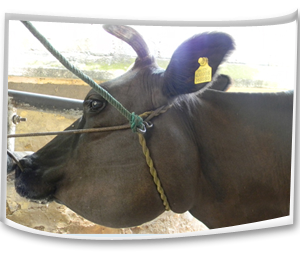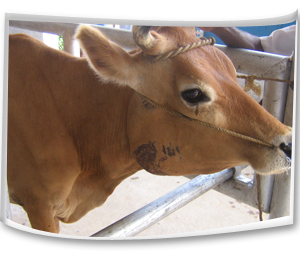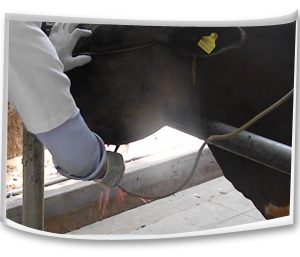|
Actinomycosis
| Nature of disease |
|
- This is a chronic infectious bacterial disease occurs in dairy animals.
- This causes swelling of lower jaw or around the mandibular region.
- This condition affects the feed intake of the animals.
- The disease is characterized by rarefying osteomyelitis of the bone of skull in cattle.
|
| |
Causes |
- Actinomycosis is caused by Actinomyces bovis.
- In addition to this organism, association of bacteria like Corynebacterium pyogenes and Staphylococcus are also seen.
|
| Mode of Transmission |
|
- Actinomycosis generally affects cattle between 2 to 5 years and it is a sporadic disease and animal to animal transmission occurs rarely.
- The organisms remain as resident population and may establish the infection through abrasion, injury or wounds.
- The abrasion of buccal mucosa induced by coarse feed or surface material while chewing may set up infection.
- Transmission of infection through dental alveoli at the time of eruption is noted.
- The alimentary canal of normal cattle may harbor A.bovis and from where the organisms may invade the subepithelial tissues through injury by surface object.
|
 |
- The lesions appear initially as a hard, painless, circumscribed protuberance usually at the level of central molar teeth of the mandible or maxilla.
- The invasion damages the bony tissues and in some cattle, large granulomatous mass appear on the surface of the jaw followed by development of sinus tracts.
- Due to extensive involvement of the mandible and maxilla, the process of mastication is affected and thus there is impairment of digestion resulting to loss of general health.
- Abscess may extend and may produce sinus to the skin surface where from, the purulent discharges are drained.
- Examination of oral cavity may exhibit loose teeth or missing teeth.
- There is foul breath from the mouth known as halitosis.
- Loose teeth induce hypersalivation and dysphagia (difficulty in feeding).
- The adjacent bones may be affected in long standing cases.
- The adjacent lymph nodes are not affected and the disease does not spread through lymphatic channel.
|


|
| |
 |
| Control measures |
|
- There is no vaccine against this disease.
- Isolation of infected animals and their treatment are to be rendered.
- Removal of contaminated materials and disposal of animals with discharging foci may be made.
- This condition should be consulted with qualified veterinarian for antibiotic treatment.
|
 |
| |
 |
|